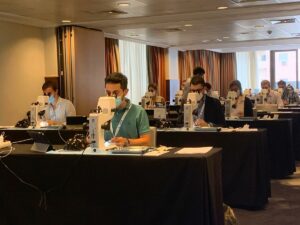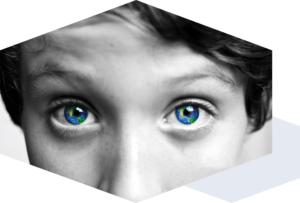OCULAR SURFACE MASTER CLASS 2024

On February 9,2024 the 5th Edition of the Ocular Surface MasterClass event, organized by Théa, was launched by Jean-Fréderic Chibret at the Institute of Ocular Microsurgery (IMO) in Barcelona. More than a hundred European ophthalmologists gathered at the event, to celebrate the Dry Eye Masterclass, where the latest developments in dry eye were discussed. Amond ocular surface disease, Dry Eye is a chronic, multifactorial disease, increasingly common, it is estimated to affect 350 to 700 million people worldwide(1).
The meeting, included advances and new perspectives to address this pathology, through clinical cases, which included patient testimonials, on different causes of dry eye. Likewise, it was explained how to treat and diagnose the different types of the disease and, in parallel, there was four practical workshops with equipment and diagnostic techniques, as well as for the treatment of dry eye.
According to Dr. José Luis Güell, an expert in corneal surgery at IMO Grupo Miranza and former president of EUCORNEA, “we have experienced an increase in the number of cases of dry eye in our consultations, especially after the pandemic. The increasingly common use of screens means that we blink less, increasing ocular dryness because the tear does not distribute well on the surface of the eye. Certain lifestyle habits also influence, such as smoking (including passive smoking) or exposure to dry environments (air conditioning and heating).”
Age is another determining factor, since it is estimated that by the age of 70 practically the entire population suffers from it, so the increase in life expectancy also influences the annual increase in consultations for this syndrome.
Certain types of medication, such as antidepressants or antipsychotics, as well as some diseases, basically autoimmune ones, also act as triggers for dry eye, by altering the functioning of the Meibomian glands, responsible for providing lipids to the tear,” explains the expert.
Likewise, it is very important not to confuse dry eye disease with ocular dryness, which is usually the first symptom of this pathology and other associated diseases, such as blepharitis, an inflammation of the edge of the eyelid. Without the appropriate treatment, all of them can lead to serious pathologies, such as corneal ulcers, and put vision at risk. Therefore, “it is very important, in the face of any symptom or discomfort, to visit the ophthalmologist to rule out or diagnose dry eye in time and, in that case, prescribe an effective and personalized treatment for each patient,” concludes Dr. Güell.




